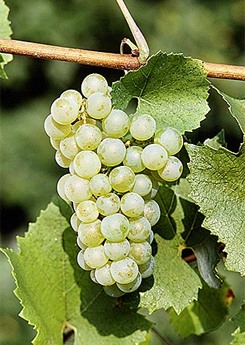 Chardonnay is world’s most famous white wine grape variety. It is grown worldwide from England to New Zealand because of its “low maintenance” feature, it easily adapts well to a variety of climates, though initially it was originated in the Burgundy wine region of eastern France. At this point the wine is produced in extremely high yields all around the world; these yields are then transformed into millions of bottles of Chardonnay wines. It is one of the most commonly planted grape varieties with over 160,000 hectares worldwide, in more regions than any other. It is easily available at any state store as well as local grocery store and wine store, although all are in different styles and prices.
Chardonnay is world’s most famous white wine grape variety. It is grown worldwide from England to New Zealand because of its “low maintenance” feature, it easily adapts well to a variety of climates, though initially it was originated in the Burgundy wine region of eastern France. At this point the wine is produced in extremely high yields all around the world; these yields are then transformed into millions of bottles of Chardonnay wines. It is one of the most commonly planted grape varieties with over 160,000 hectares worldwide, in more regions than any other. It is easily available at any state store as well as local grocery store and wine store, although all are in different styles and prices.
Chardonnay Qualities
Chardonnay grapes need a considerably longer growing season, though they ripen easily and produce medium to full bodied wines with tropical fruits aroma and flavor. They generally produce large crops but over cropping results in ruining the natural taste of the wine, that is why it is somewhat more sensitive to winemaking and harvesting techniques. The best Chardonnay crops come from cool locales like Burgundy or California’s Carneros District, but it also adapts to warmer regions like Australia. Countries where fruit grows well because of their climatic conditions are France, Autralia, Italy, Moldavia, South Africa, Chile, Spain, Bulgaria, Romania, Israel, Portugal, Hungary, Greece and China. California being at the top of commercial popularity of Chardonnay, it has achieved great success in growing and harvesting and has earned the most consumer popularity. Even in quality sparkling wines and French Champagne. It is more exciting because of the effusive varietal quality it develops there. Australia has also been fairly good with harvesting and bottling of Chardonnay wine, although they generally misname it as “Pinot Chardonnay”
Chardonnay Flavor
“Rich” is the word that perfectly describes Chardonnay. It comes in an impressive range of flavors; it might smell like apples, lemons, peaches or tropical fruits. It completely dominates its aroma and flavor, the buttery taste comes from fermentation of oak, the idea is to add some oak characteristics in the wine, along with allowing the wine to develop its mellow texture, which gives it a pale straw or gold color and not clear white. Winemakers also toast the inner side of the barrel, giving it a smoky oak or toasty flavor. Aging the grapes in oak gives the final product a hint of spice with an aroma of vanilla or coconut. If you like the smooth buttery style, you should look for the ones that have been through malolactic fermentation; this term is best associated with Chardonnay. It is the process of taking the malic acidity in wine and translating it into a softer and milder lactic acid. Malic acid is found in smith apple and lemon whereas the lactic acid is found in milk and butter. A wine that undergoes this procedure is less acidic in nature, with a diminished fruit character. Some on the other hand prefer to use no oak, which gives it a clear color and crispier flavor.
Chardonnay Pairing
Due to its style and versatility, Chardonnay has the potential to be paired with roasted chicken and other white meats such as turkey and smoked fish along with spicy southeastern Asian Cuisine, garlic and guacamole dips. Also consider pairing it with pork or other recipes that have a heavy cream or butter base. Style that is characterized by maintaining more acidity is usually paired well with tomato-based dishes and dishes that feature sweet onions; on the other hand the one with a very mellow taste is paired with mushroom soup or dishes that feature cheese. Chardonnay is the perfect drink for outdoor dining during summer.
